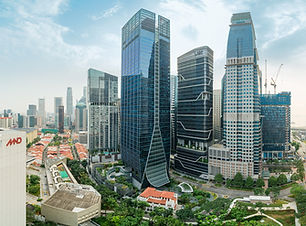
Smart Buildings
We believe that smart buildings represents the intelligent, connected and sustainable future of the built environment. Just as technology is revolutionising processes across industries like IT, finance, healthcare and manufacturing, it is also transforming the way structures are designed, built and operated. smart net zero levers data expertise to help unlock the maximum value for buildings and its associated people and organisations.
What problem are we addressing?
The built environment is currently responsible for 39% of global energy related carbon emissions (source: World Green Building Council). The Climate Change Committee found that buildings in the UK account for 59% of electricity consumption with the associated energy costs rising significantly over the last decade.
Therefore 'smart buildings' or the utilisation of technology within the built environment is helping to reduce operating costs, energy spend and carbon impact of buildings whilst at the same time identifying ways to improve the health, wellbeing, comfort and productivity of their occupants through enhanced internal environmental conditions.
Delivering the solution
Our smart building support services have data at its heart and our expertise ensures we can optimise it whilst levering the various latest ‘smart building’ technologies. We work to unlock the maximum value for your organisation, people and buildings.
smart net zero works across the 'smart building' lifecycle from planning through to monitoring and decommissioning. We are able to deploy secure, non-invasive technology to continuously monitor key performance data across entire building portfolios, helping owners to understand and optimise energy performance to create an enhanced environment. Our specialism is in the optimisation of buildings using a unique set of data-managed platforms and sources including building management systems, sensors and regional environmental data.
Our benefits to you
-
Reduced operating costs, energy spend and carbon impact.
-
Improved health, wellbeing, and productivity through enhanced internal environmental conditions and occupancy analysis.
-
Enhanced security and resilience to better manage threats and respond to incidents quicker and more effectively.
-
Greater visibility over plant operation to help inform and develop effective maintenance programmes.
-
Increased life span of plant through reduced operation, reducing maintenance costs through predictive maintenance.
-
A single solution view integrating in different platforms to cover assets across a varied portfolio, both large and small, streaming to one unified interface and set of analysis tools.
-
Levering automation and integration with other systems to improve data-led decision making and reducing the risk of human errors.
-
Help increase asset value by improving the building value proposition to investors, owners and occupants.

Examples of smart buildings

Frasers Tower, Singapore
Frasers Tower is a 38-storey office tower in Singapore and is home to IT giant Microsoft. This tower is a prime example of a connected building, making use of a smart building system integrated with Microsoft applications like Outlook and Office 365 that allow for the effective performance of both the structure and its occupants.
Frasers Tower also makes use of smart sensors that monitor temperature, air quality and lighting. What’s more, through the use of a digital twin – a virtual replication of the property itself – Frasers Tower is helping pave the way for future structures of its kind.

Burj Khalifa, Dubai
The Burj Khalifa is one of the world’s tallest structure at over 829 metres. This remarkable structure is also considered one of the ‘smartest’ structures in the UAE, and the centre of Dubai’s mission to become a smart city.
Using Honeywell’s Outcome-Based services system for collecting real-time analytics and performance reporting, the Burj Khalifa can accurately and continuously track its heating, ventilation and air conditioning (HVAC) systems. This has helped reduce total maintenance hours by 40% for mechanical assets, and improve availability by almost 100%

The Crystal, London
The Crystal was initially designed by architectural practice WilkinsonEyre as an exhibition centre, but was reopened in 2022 as London’s new city hill. One of the most sustainable buildings in the world, The Crystal was initially opened as part of a sustainable cities initiative by technology giant Siemens.
The Crystal derives 20% of its power from solar panels fitted to its roof. Throughout the day, its lighting system is automatically adjusted to conserve energy. It also collects data from IoT sensors that continuously monitor energy consumption.
See how we can help
Fill in the simple form below just so we can get back in touch and discuss your requirements.
